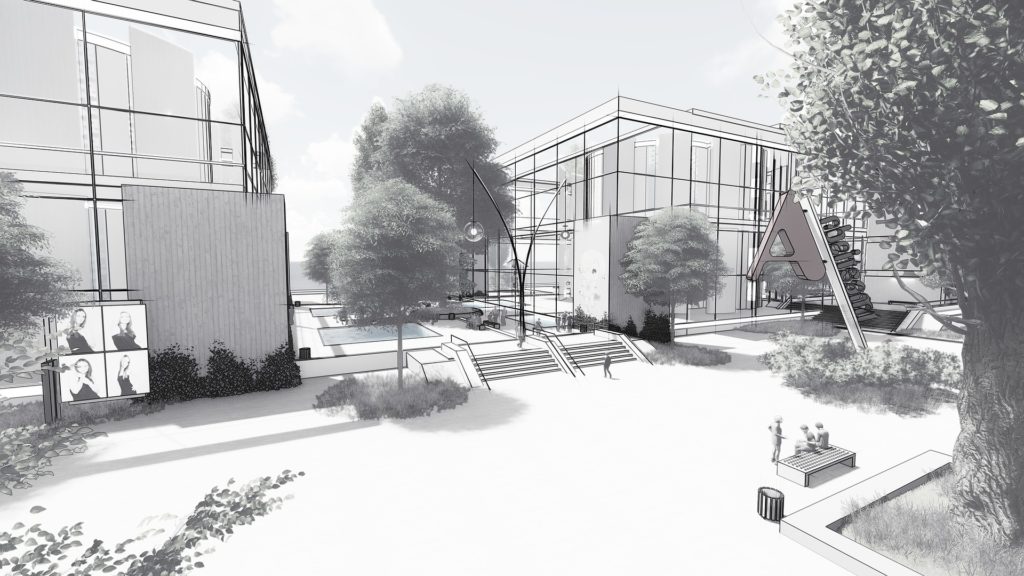Einsteigerguide: Einführung in CAD.
CAD (Computer Aided Design) ist der Einsatz von Computersoftware zur Gestaltung und Dokumentation des Konstruktionsprozesses eines Produktes.

Beim technischen Zeichnen werden grafische Symbole wie Punkte, Linien, Kurven, Ebenen und Formen verwendet. Im Wesentlichen gibt es eine detaillierte Beschreibung aller Komponenten in grafischer Form.
Hintergrund.
Technische Zeichnungen sind seit mehr als 2000 Jahren im Einsatz. Der französische Mathematiker Gaspard Monge führte die Verwendung von orthographischen Projektionen im 18. Jahrhundert ein.
Da visuelle Objekte über Sprachen hinausgehen, haben sich die technischen Zeichnungen im Laufe der Jahre weiterentwickelt und erfreuen sich zunehmender Beliebtheit. Während frühere technische Zeichnungen handgefertigt wurden, haben Studien gezeigt, dass technische Entwürfe recht kompliziert sind. Eine Lösung vieler technischer Probleme erfordert eine Kombination aus Organisation, Analyse, Problemlösungsprinzipien und einer grafischen Darstellung des Problems. Objekte im Engeneering werden durch eine technische Zeichnung (auch als Drafting bezeichnet) dargestellt, die Entwürfe und Spezifikationen des physischen Objekts und der Datenbeziehungen darstellt. Da eine technische Zeichnung präzise ist und alle Informationen über das Objekt klar kommuniziert, muss sie präzise sein. Hier kommt CAD ins Spiel.
CAD steht für Computer Aided Design. CAD wird zur Konstruktion, Entwicklung und Optimierung von Produkten eingesetzt. Obwohl es sehr vielseitig ist, wird CAD in großem Umfang bei der Konstruktion von Werkzeugen und Vorrichtungen eingesetzt, die sowohl im Fertigungsprozess als auch im Konstruktionsbereich benötigt werden. CAD ermöglicht es Konstrukteuren, ihre Arbeit am Bildschirm zu entwerfen, auszudrucken und für die spätere Bearbeitung zu speichern.
Als es zum ersten Mal eingeführt wurde, war CAD nicht gerade ein wirtschaftliches Angebot, da die Maschinen damals sehr teuer waren. Die zunehmende Computerleistung in der späteren Hälfte des zwanzigsten Jahrhunderts, mit der Ankunft des Minicomputers und später des Mikroprozessors, hat es Ingenieuren ermöglicht, CAD-Dateien zu verwenden, die eine genaue Darstellung der Abmessungen/Eigenschaften des Objekts sind.
Einsatz von CAD.
Mit CAD werden Vorentwürfe und Layouts, Konstruktionsdetails und Berechnungen, die Erstellung von 3D-Modellen, die Erstellung und Freigabe von Zeichnungen sowie die Anbindung von Analyse-, Marketing-, Fertigungs- und Endanwenderpersonal durchgeführt.
CAD erleichtert den Fertigungsprozess, indem es detaillierte Informationen über ein Produkt in einer automatisierten Form überträgt, die von geschultem Personal universell interpretiert werden können. Mit ihm können sowohl zweidimensionale als auch dreidimensionale Diagramm erstellt werden. Durch den Einsatz von CAD-Software-Tools kann das Objekt aus jedem Blickwinkel betrachtet werden, auch von innen nach außen. Einer der Hauptvorteile einer CAD-Zeichnung ist, dass die Bearbeitung im Vergleich zur manuellen Methode schnell erfolgt. Neben der Detailkonstruktion von 2D- oder 3D-Modellen wird CAD von der Konzeption und Auslegung von Produkten bis hin zur Definition der Fertigung von Bauteilen eingesetzt. CAD reduziert die Konstruktionszeit, indem es präzise Simulationen ermöglicht, anstatt physikalische Prototypen zu bauen und zu testen. Durch die Integration von CAD und CAM (Computer Aided Manufacturing) wird die Produktentwicklung weiter optimiert.
CAD ist derzeit weit verbreitet für Industrieprodukte, Animationsfilme und andere Anwendungen. Ein spezieller Drucker oder Plotter ist in der Regel erforderlich, um professionelle Design-Renderings zu drucken. CAD-Programme verwenden entweder vektorbasierte Grafiken oder Rastergrafiken, die zeigen, wie ein Objekt aussehen wird.
CAD-Software ermöglicht
- Effizienz in der Designqualität
- Steigerung der Produktivität des Ingenieurs
- Bessere Protokollierung durch bessere Dokumentation und Kommunikation.
Der Einsatz von CAD hat heute fast alle Branchen durchgedrungen. Von der Luft- und Raumfahrt über die Elektronik bis hin zur Fertigung wird CAD in allen Branchen eingesetzt. Da CAD die Kreativität fördert und die Produktivität beschleunigt, wird es immer mehr zu einem wichtigen Werkzeug für die Visualisierung vor der eigentlichen Umsetzung eines Fertigungsprozesses. Das ist auch einer der Gründe, warum CAD-Schulungen immer mehr an Bedeutung gewinnen.
Typen von CAD-Software.
Seit ihrer Einführung Ende der 60er Jahre hat sich die CAD-Software sprunghaft verbessert. Eine breite Klassifizierung von CAD ist:
- 2D CAD
- 3D CAD
- 3D Wireframe und Surface-Modellierung
- Solid Modelling
Da immer mehr Unternehmen (nahezu alle) auf CAD/ CAE / CAM setzen, um Effizienz, Genauigkeit und kürzere Time-to-Market der Produkte zu erreichen, steigt die Nachfrage nach CAD-Software. Zu den Branchenführern in diesem Bereich gehören AutoCAD, Dassault Systems, Siemens und Altair.


